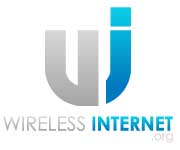3G : Third Generation Mobile Networks
Still the most popular. Still the most coverage in the USA. 3G networks aren't getting the hype of 4G/LTE these days. But when every iPhone is using 3G, you know it still the dominant mobile broadband network.
We've analyzed the biggest 3G Networks in the USA below:
Verizon
Verizon was the first company to offer faster 3G services to consumers. Verizon's coverage maps are extensive, but the 3G network covers less of the country than Sprint. The East coast and many southern states see full coverage, while areas in southern Texas, Nevada, Utah and Montana are almost devoid of voice and data coverage. Verizon coverage is fairly good for users who live near large cities, however. It's unlikely that dead zones will see much improvement because the network is focusing on expanding its 4G coverage instead. User-submitted speed test results show an average download speed of 3.78 megabits per second with maximum speeds well over 50 Mb/s in the United States. Specific reports compiled by SpeedTest.net show that 3G versions of the iPhone download more slowly on Verizon than AT&T. While Verizon doesn't give an estimate for speeds on its 3G CDMA network, the carrier does describe 3G as ten times slower than 4G.Sprint
While Sprint has been busy trying to catch up to the other providers in the United States, its 4G market still lags behind, which means many of Sprint's customers only have access to the 3G network. 3G coverage extends over almost the entire country, however. Some areas in Nevada, California, Oregon, Arizona and Washington lack voice coverage, while much of Alaska is uncovered, too. Sprint's CDMA network will continue to operate in the same locations and fashion for some time. As the carrier increases LTE coverage, 3G frequencies will have a smaller load, resulting in faster data times. As of January 2013, average download speeds for the 3G network were just 3.55 megabits per second according to reports on SpeedTest.net. The best speeds on Sprint's 3G network reached 44 Mb/s. According to the company, the average speed for 3G devices is between 600 Kb/s and 1.4 Mb/s. Peak rates are just over 3 Mb/s.AT&T
The first GSM provider on this list provides 3G coverage via HSPA towers. Because the company's 3G devices use SIM cards, which means users can swap out cards from other companies to use their devices internationally. In the USA, AT&T's 3G network appears slightly better than that of Verizon. There's more coverage in Texas, for instance, and Hawaii is almost completely covered. Alaska has plenty of dark zones, however. SpeedTest.net results show an average download speed of 16.5 Mb/s, which is much higher than other 3G carriers. Areas in Pennsylvania, Texas and Florida see maximum speeds greater than 60 Mb/s. A PC World study in May 2012 showed AT&T with the fastest 3G speeds in cities such as Chicago, averaging at 3.45 Mb/s. While AT&T isn't planning to expand its 3G network, the company does plan to release phones that will intelligently switch between 3G and Wi-Fi networks depending upon which is better. For more information on 4G Service from AT&T.T-Mobile
T-Mobile is the other GSM carrier on this list, and wraps up the big four networks in the USA. While Verizon and AT&T were focusing on 4G in early 2012, T-Mobile was upgrading its 3G network to HSPA+ technology, making it up to three times faster than the offerings from the competition. According to a test by Gizmodo, T-mobile's average speeds were close to 4 Mb/s, while other carriers at the time were barely offering 1 Mb/s download speeds. A later study by PC World found that T-Mobile had the fastest speeds in all but two of the thirteen test cities. Unfortunately, this carrier doesn't reach as far as the others on this list. There's fairly consistent coverage up from the East Coast to the middle of the country. However, states to the west of the Rocky Mountains appear much more spotty. Metropolitan areas in California, Oregon and Washington have 3G coverage, but the rest of the states are blank. Areas outside major cities also have partner, or roaming, coverage, and do not use T-Mobile's actual towers.MetroPCS
The last carrier on this list is much smaller. MetroPCS cover maps look similar to T-Mobile; although, the company offers 3G roaming via partners over most of the country. MetroPCS advertises full services only in its home areas: Atlanta, Dallas, Florida, Detroit, Los Angeles and parts of New York and Pennsylvania. MetoPCS lags behind others with average 3G speeds of 2.2 Mb/s according to third-party sites like TestMy.net. Metro uses 3G CDMA technology. in October 2012, MetroPCS and T-Mobile filed papers to merge, which may lead to expanded 3G markets for the smaller company.
Find your ideal mobile provider, use our comprehensive search
Find your Service Provider
